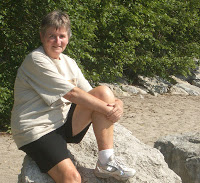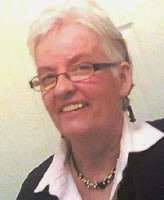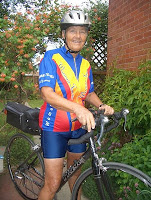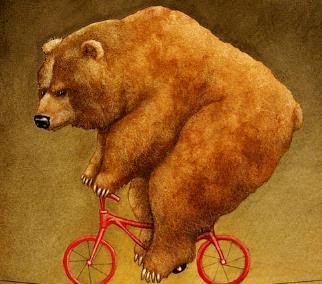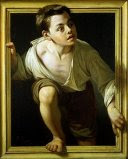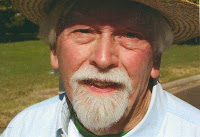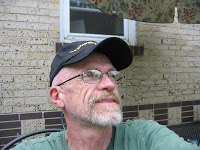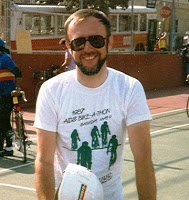At first, we laughed. That was how the years of fears and tears began.
It was a cool, breezy but sunny day in San Francisco as we took our lunches out to Union Square. Scattered high clouds and wisps of fog flew across the sky but not enough to dim the sun or block its warmth. Lloyd, Bill and I worked together at Macy’s and loved to spend our lunch breaks on a grassy patch in the busy park, the center of SF’s retail district. The elegantly turned out ladies who shop swirled around us. From Macy’s to Saks to Magnin’s to Neiman Marcus, they pursued their perfect ensembles. Meanwhile, tourists hurried about trying to catch a cable car ride up Powell Street over Nob Hill to Fisherman’s Wharf.
As we munched our sandwiches, Lloyd, I think, read a little item in the San Francisco Chronicle recapping a report in the Los Angeles Times about “gay cancer.” We chuckled at this latest concoction of the flourishing gay lib movement. We had our own newspapers, book stores, bars, choruses, churches, and clubs, so, of course, wanting nothing of the straight world, we would have our own cancer. We laughed.
That LA Times report told of the strange coincidence of young and otherwise healthy men who happened to be gay contracting a rare form of cancer called Kaposi’s sarcoma which usually appeared only in elderly Jewish men. A cluster of these cases had shown up in Los Angeles. Nobody had a clue as to why.
We threw away the newspaper and went back to work.
Lloyd, Bill and I had by chance one day walked into a temp agency, not knowing each other. A staffer there said there were three openings in the back office at Macy’s receiving, sorting and distributing expensive fine jewelry and watches for 19 Northern California stores. We all said yes.
We got to know each other a little on the walk from the agency to Macy’s. Lloyd was a former theater major and loved disco. He and his lover Steven were regulars at Trocadero, San Francisco’s top disco in the 1980s. Bill had just moved to SF from Boston to get away from his family and to take part in the punk rock scene. He loved the B-52’s. And there was me. Recently arrived from Ohio, returning to the city I loved from a decade earlier, and hoping to start of new life, a real life, in this dynamic community with its combination of dramatic flash, earnest politics and organizations of every kind.
The three of us—me in my early 30s, Lloyd in his mid-20s, and Bill in his early 20s—hit it off from the start. We were all sassy then and made up for the routine job with a running repartee. Every morning we re-hashed that day’s episode of Armistead Maupin’s Tales of the City, a serial in the Chronicle whose characters parodied prominent city figures. Guessing what was true to fact and what was made up kept many a conversation going for days. After work many times we went out together to a cabaret. And we went dancing at the glitzy, all-night disco parties at the Galleria. I remember one Halloween when Lloyd used his theater skills to deck us all out as Renaissance princes. I danced all that night in tights and a velvet doublet with puffed shoulders, a flouncy beret and feathered mask. I found out what fabulous really meant that night.
Through 1981 and ‘82, reports of “gay cancer” continued to grow and generated deep fear in the community. Suddenly, cases popped up in Los Angeles, San Francisco, New York City and other places. It seemed to be a contagion that rapidly turned young men into withering, festering old men but nobody knew what or why or how it happened. Or who would be next. Then gay cancer grew into other diseases and came to be called Gay Related Immune Deficiency—GRID. Sexual transmission was believed to be involved somehow. Or maybe those disco queens just did too many drugs. Or too much alcohol and too much sex. Or a poor diet. Or not the right vitamins. Or not enough exercise, as if flinging yourself around a dance floor to a frantic beat isn’t exercise.
Bill, the youngest of us, was the first to get sick. He kept complaining of just not feeling well though his ill feeling didn’t match anything he knew, like flu or tummy ache. I told him that these weren’t days you didn’t want to be feeling well and urged him to see a doctor. He didn’t know any doctors, he said. So, one day I took him to see my doctor. I don’t know what the doctor said or did, but Bill seemed to get better. We even went dancing sometimes.
But then he didn’t feel like dancing. And some days he didn’t show up for work. And then stopped working. Soon he felt too weak to do much of anything. A few months later, he went back to his family in Boston. I lost touch with him but heard he died not long after that. He died before they could even name the disease that killed him.
Then Steven, Lloyd’s partner, got sick. Then two other guys in our little dancing circle. And then even Lloyd, whom I was closest to. It was like a stalker picking us off one by one. Pretty soon I was dancing alone. Suddenly, those corny, wrenching, kitschy disco ballads became desperate pleas longing for love and life.
I think back to that breezy day when we laughed and went on laughing until it was impossible to laugh and then some of us wondered if we would ever laugh again. I think back to the days of not knowing and then getting a phone call that let me know that I did know, did know another one sick and that I had come that much closer to it and maybe I’d be making the next phone call.
Wayne, a former boyfriend whom I’d dated for a few months, called one night. We exchanged the normal chat about how we were each doing but he hardly had to say anything to explain to me why, after months of not seeing each other, this call on this night.
“I have to tell you,” he said, “I was diagnosed with…,” something or other, the exact name of the obscure ailment escapes me or maybe I never even heard it. The word “diagnosed” told me enough. I had now, if I hadn’t already, definitely come into direct contact with whatever it was that caused this illness or combination of strange illnesses—nobody ever seemed to have just one thing going on.
I asked him how he was doing and feeling and he said he was doing pretty good. He was getting his support network together. Count me in on that, I said. Anything you need, I’m here. He said he was determined to beat this thing, an obligatory statement that everybody made back then not knowing if it had even the slightest chance of coming true. I said I hoped I could help.
“Maybe we should get together and go out for dinner or a movie,” I suggested. About the most anyone could offer then was hugs and hand holding. He liked that idea so we made a date. We got together a few times and I cooked a dinner for him sometimes. Wayne was lucky. He had lots of friends and we all made sure that he almost never had to be left alone. But each time I saw him, he was thinner and weaker and then he started getting seriously sick with high fevers, no ability to eat, and wasting away. His own body was killing him. He died six months later.
It would be a few years before science figured out anything. Eventually, a name was given this strange syndrome that turned healthy young men into withering, festering old men overnight. That name was Acquired Immune Deficiency Syndrome or AIDS. And AIDS was about to dominate my social, romantic, political and professional life for some years to come.
About the Author
Nicholas grew up in Cleveland, then grew up in San Francisco, and is now growing up in Denver. He retired from work with non-profits in 2009 and now bicycles, gardens, cooks, does yoga, writes stories, and loves to go out for coffee.

